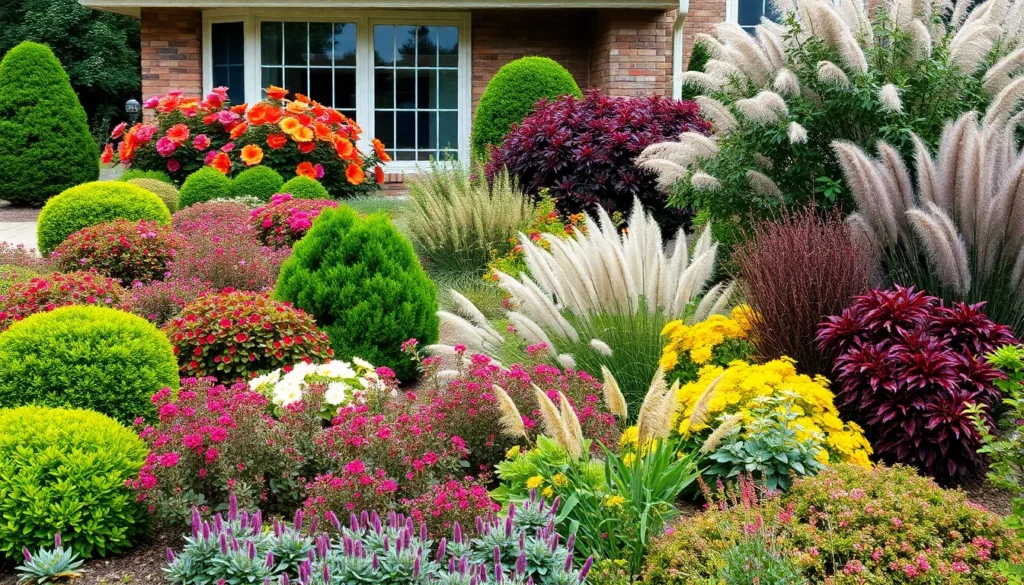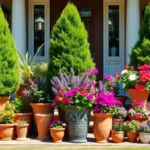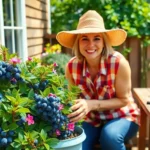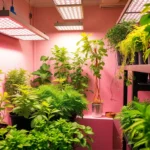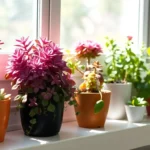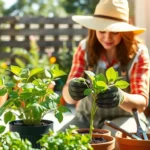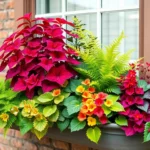Creating a stunning front yard that looks vibrant throughout every season doesn’t have to be a dream. We’ve all walked past those picture-perfect homes where the landscaping maintains its beauty whether it’s the depths of winter or the peak of summer heat. The secret lies in choosing the right year-round plants that deliver consistent color texture and visual interest no matter what Mother Nature throws their way.
Most homeowners struggle with the seasonal rollercoaster of gorgeous spring blooms followed by barren winter landscapes. We understand this frustration because we’ve been there too. The good news? With strategic plant selection you can transform your front yard into a four-season showstopper that’ll make your neighbors stop and stare.
Year-round front yard plants aren’t just about evergreens anymore. Today’s industry design embraces a diverse mix of perennials ornamental grasses flowering shrubs and architectural plants that work together to create lasting curb appeal. Let’s explore how you can build this foundation for your home’s first impression.
Evergreen Foundation Plants That Anchor Your Front Yard Design
Foundation plants serve as the backbone of successful front yard landscaping, providing structure and visual interest that persists through every season. We’ve identified three exceptional evergreen options that deliver both reliability and beauty for your year round industry design.
Boxwood Shrubs for Classic Structure
Boxwood shrubs offer unmatched versatility for creating formal hedges, garden borders, and topiary features that define your front yard’s architecture. We recommend planting these slow growing evergreens in zones 4-9 where they’ll maintain their dense, compact foliage throughout winter months.
Common boxwood varieties like Buxus sempervirens and dwarf English boxwood reach mature heights between 3-6 feet, making them perfect for foundation plantings beneath windows. Their small, glossy leaves create a refined appearance that complements both traditional and contemporary home styles.
Maintenance requirements include annual pruning in late spring and consistent watering during establishment periods. We suggest spacing boxwood plants 2-3 feet apart for hedge applications, allowing adequate air circulation to prevent common fungal issues.
Rhododendrons for Colorful Blooms
Rhododendrons transform front yard foundations with spectacular spring flower displays while maintaining attractive evergreen foliage year round. We’ve found these acid loving shrubs thrive in partial shade conditions with well draining, organic rich soil.
Popular cultivars like ‘PJM’ rhododendrons bloom in early spring with vibrant purple pink flowers, while ‘Encore’ varieties provide multiple bloom cycles throughout the growing season. These foundation plants typically reach 4-8 feet at maturity, creating substantial visual impact without overwhelming smaller landscapes.
Proper planting depth ensures rhododendron success, with root balls positioned slightly above ground level to prevent water logging. We recommend applying 2-3 inches of organic mulch around plants to maintain soil moisture and regulate temperature fluctuations.
Japanese Yews for Versatile Shapes
Japanese yews deliver exceptional adaptability for front yard designs, tolerating both full sun and deep shade conditions while accepting aggressive pruning for custom shapes. We consider these needle bearing evergreens among the most reliable foundation plants for challenging growing conditions.
Taxus cuspidata varieties like ‘Densiformis’ and ‘Capitata’ offer different growth habits, from low spreading forms to upright pyramidal shapes reaching 10-15 feet. Their dark green needles provide rich color contrast against lighter home exteriors while supporting year round privacy screening.
Pruning flexibility allows Japanese yews to function as formal hedges, specimen plants, or architectural elements within front yard landscapes. We recommend fertilizing these slow growing evergreens annually with balanced fertilizer applications in early spring for optimal health and appearance.
Seasonal Color Rotation Plants for Continuous Interest
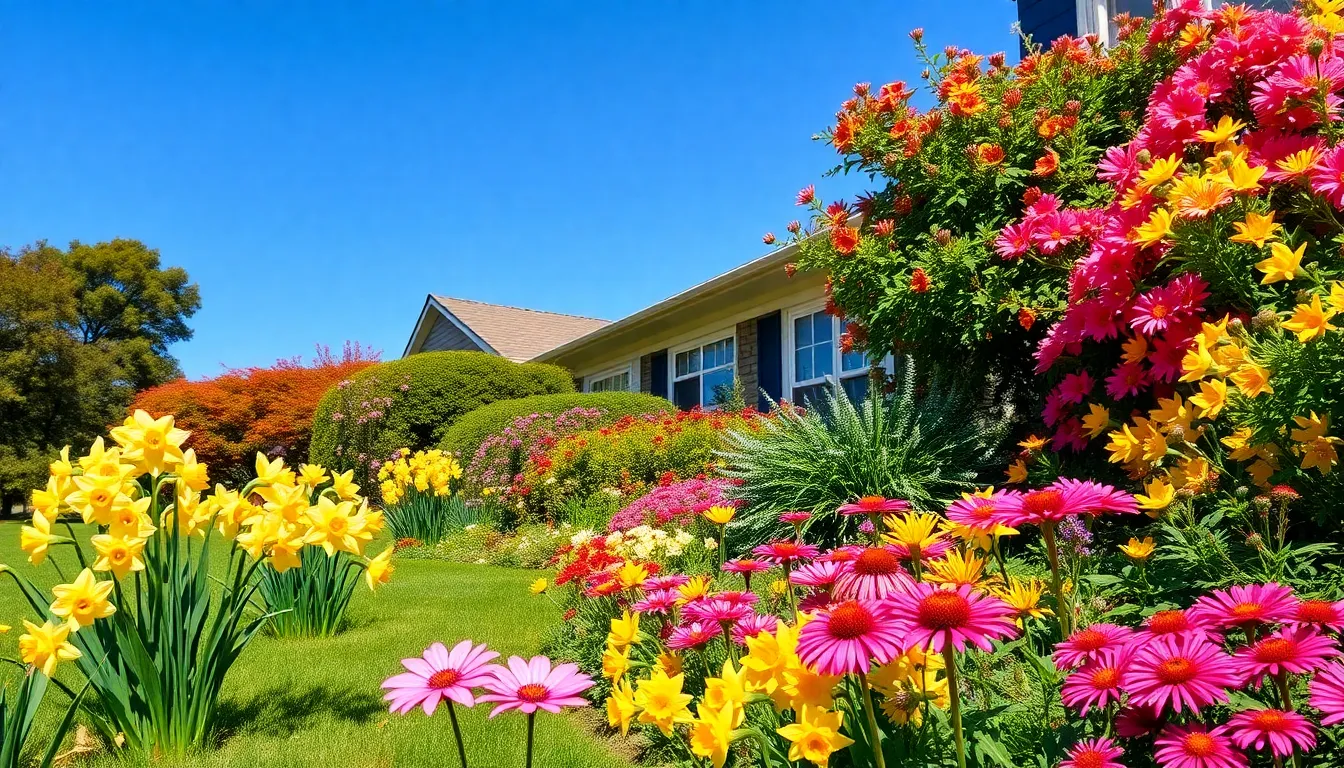
Strategic plant selection ensures your front yard maintains vibrant appeal across all seasons. We’ll explore exact plants that peak at different times, creating a natural rotation of color and texture that keeps your industry captivating year-round.
Spring Bulbs That Return Annually
Daffodils emerge as the first cheerful messengers of spring, pushing through late winter soil to deliver bright yellow and white blooms. These hardy bulbs naturalize beautifully, meaning they’ll multiply and return stronger each year with minimal intervention from you.
Tulips provide classic spring elegance in countless colors and forms, from traditional cup shapes to fringed varieties. Plant them in clusters of 5-7 bulbs for maximum visual impact, choosing early, mid, and late season varieties to extend the blooming period.
Crocuses offer delicate purple, white, and yellow flowers that often bloom through snow, creating magical early spring moments. These small bulbs work perfectly as ground cover under deciduous trees or scattered throughout lawn areas.
Hyacinths contribute intense fragrance alongside their dense flower spikes in pink, blue, purple, and white. Position these aromatic bulbs near walkways or windows where you’ll appreciate their sweet scent throughout the blooming season.
Summer Perennials for Heat Tolerance
Coneflowers (Echinacea) deliver reliable summer color in shades of purple, pink, white, and yellow while attracting beneficial pollinators. These drought tolerant perennials bloom from early summer through fall, requiring only occasional deadheading to maintain their appearance.
Black-eyed Susans create masses of golden yellow blooms that withstand intense summer heat and humidity. We recommend planting them in full sun locations where they’ll spread naturally to form substantial colonies over time.
Daylilies produce trumpet shaped flowers in virtually every color except true blue, with many varieties blooming repeatedly throughout summer. Each flower lasts only one day, but established clumps produce dozens of buds for continuous blooming.
Coral bells (Heuchera) excel in partial shade locations, offering colorful foliage in burgundy, lime green, silver, and bronze tones. Their delicate flower spikes appear in late spring to early summer, adding vertical interest above the attractive leaves.
Fall Foliage Plants for Autumn Appeal
Viburnum shrubs transform into autumn showstoppers with brilliant red, orange, and yellow leaves that persist well into late fall. Many varieties also produce colorful berries that attract birds while adding another layer of seasonal interest.
Ninebark develops striking fall colors ranging from golden yellow to deep red, depending on the variety and growing conditions. This native shrub requires minimal care while providing excellent structure and seasonal drama to front yard plantings.
Camellias offer the unique advantage of blooming during fall and winter months when most other plants rest. These evergreen shrubs produce elegant flowers in pink, white, and red while maintaining attractive glossy foliage throughout the year.
Deciduous trees like maples and dogwoods create overhead canopies of autumn color that frame your entire front yard display. Choose varieties suited to your climate zone for reliable fall performance and manageable mature size.
Low-Maintenance Ground Cover Options for Year Round Appeal
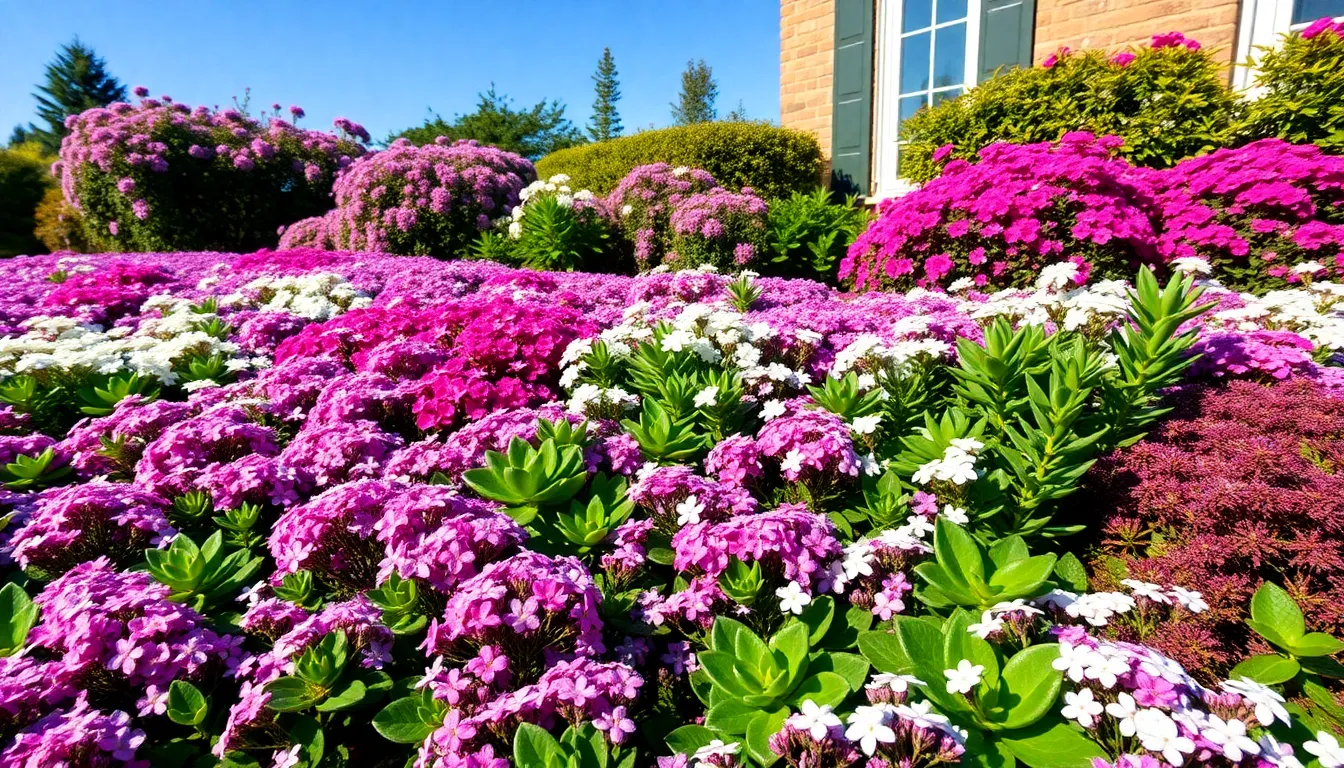
Ground covers offer the perfect solution for busy gardeners seeking continuous beauty with minimal effort. These versatile plants create living carpets that suppress weeds, retain soil moisture, and provide year round visual interest.
Creeping Phlox for Carpet-Like Coverage
Creeping Phlox delivers stunning carpet-like coverage that transforms any front yard into a colorful masterpiece. This hardy perennial spreads horizontally to create dense mats of attractive foliage, covering areas 24 to 36 inches wide while maintaining a neat 6-inch height. Purple, pink, and white flowers bloom abundantly in spring, creating spectacular displays along garden edges, rock walls, and slopes.
Full sun exposure and well-drained soil provide optimal growing conditions for this remarkable ground cover. Hardy in USDA zones 3 to 9, Creeping Phlox thrives across diverse climates while requiring minimal maintenance throughout the year. We recommend this plant for homeowners seeking maximum visual impact with minimal upkeep requirements.
Pachysandra for Shady Areas
Pachysandra thrives in challenging shady locations where most other plants struggle to survive. This evergreen ground cover forms thick, lush carpets with glossy green leaves that maintain their vibrant appearance throughout all seasons. Dense foliage creates neat, clean appearances under trees and in shaded borders where consistent green coverage becomes essential.
Low maintenance requirements make Pachysandra ideal for busy gardeners who want beautiful results without constant attention. Poor soil tolerance and drought resistance once established ensure this plant succeeds in difficult growing conditions. We find Pachysandra particularly valuable for creating uniform ground coverage in areas that receive limited sunlight.
Sedum Varieties for Drought Resistance
Sedum species excel in dry conditions where other plants typically fail, making them perfect for water-conscious landscaping. These succulent ground covers store water in their fleshy leaves, enabling them to survive extended periods without irrigation. Small star-shaped flowers appear in late summer to fall, adding seasonal interest to xeriscaped front yards.
Poor soil conditions don’t deter these remarkable plants, which actually prefer well-draining environments over rich, moist soils. Various Sedum varieties offer different heights and spreads, providing options for diverse industry needs while maintaining evergreen or semi-evergreen foliage year round. We recommend Sedum for homeowners in dry climates seeking beautiful texture and color without regular watering schedules.
Ornamental Grasses That Provide Four-Season Structure
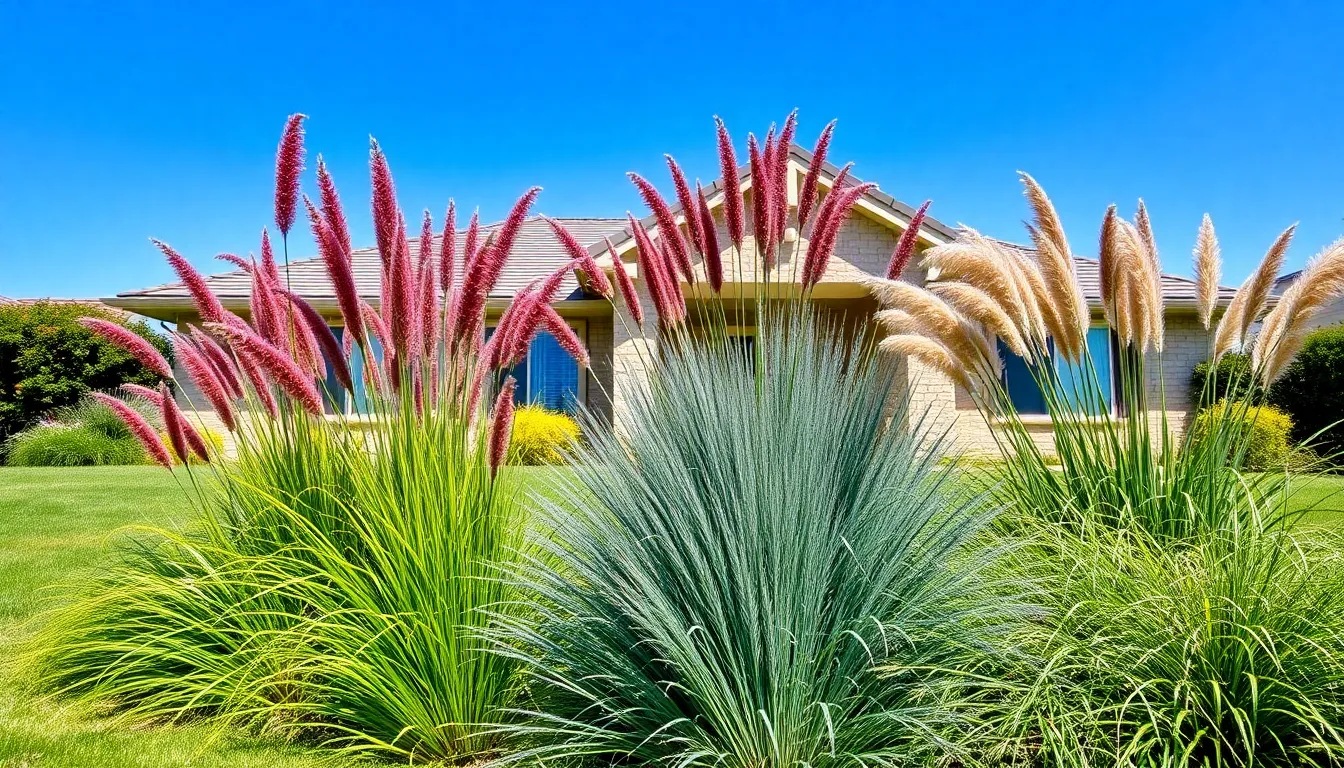
Ornamental grasses excel at creating continuous visual interest while requiring minimal maintenance throughout the year. We’ll explore three standout varieties that deliver exceptional structure and movement to front yard landscapes.
Fountain Grass for Graceful Movement
Fountain Grass transforms any front yard with its elegant arching foliage and distinctive bottlebrush flower spikes. Growing 2-4 feet tall, this ever-changing ornamental grass creates beautiful movement as wind flows through its feathery plumes. We love how its graceful form adds medium-height accent points without overwhelming smaller industry features.
Color variations make Fountain Grass particularly versatile for seasonal interest. Foliage ranges from vibrant green to rich burgundy tones, providing stunning fall displays that complement autumn’s changing palette. Soft plumes persist well into winter months, ensuring your front yard maintains visual appeal even during dormant seasons.
Maintenance requirements stay refreshingly simple with this hardy perennial grass. Cut back stems to 6 inches in late winter or early spring to encourage fresh growth. Plant spacing of 3-4 feet allows each clump to develop its characteristic fountain shape without crowding neighboring plants.
Blue Fescue for Compact Spaces
Blue Fescue delivers maximum impact in minimal space with its fine silvery-blue texture. Forming tidy mounded clumps just 6-12 inches tall, this compact ornamental grass works perfectly in small front yards or tight planting areas. We recommend using it as an edging plant where its neat habit creates clean industry lines.
Evergreen characteristics ensure year-round color in warmer climates zones 4-8. Fine blades maintain their distinctive blue-gray coloration through winter months, providing consistent texture when other plants go dormant. Mass plantings create striking carpet effects that remain attractive across all seasons.
Versatility makes Blue Fescue ideal for various industry applications. Plant it along walkways, around mailboxes, or in rock gardens where its drought tolerance shines. Dividing clumps every 3-4 years prevents centers from dying out and maintains vigorous growth.
Pampas Grass for Dramatic Height
Pampas Grass commands attention with its imposing 6-10 foot height and spectacular feathery plumes. This dramatic ornamental grass creates bold focal points that anchor large front yard designs with vertical interest. We find its striking presence works best when given ample space to accommodate its impressive mature spread.
Flower heads provide exceptional four-season appeal from late summer through winter. Large, fluffy plumes emerge in cream, pink, or silver tones, creating stunning displays that persist well into cold months. Dried flower heads maintain their beauty even after first frost, ensuring continuous visual impact.
Strategic placement maximizes Pampas Grass’s architectural qualities. Position it as a specimen plant at property corners or use it to screen unsightly views with its dense growth habit. Regular removal of old foliage in late winter keeps plants healthy and promotes vigorous new growth each spring.
Flowering Shrubs That Bloom in Different Seasons
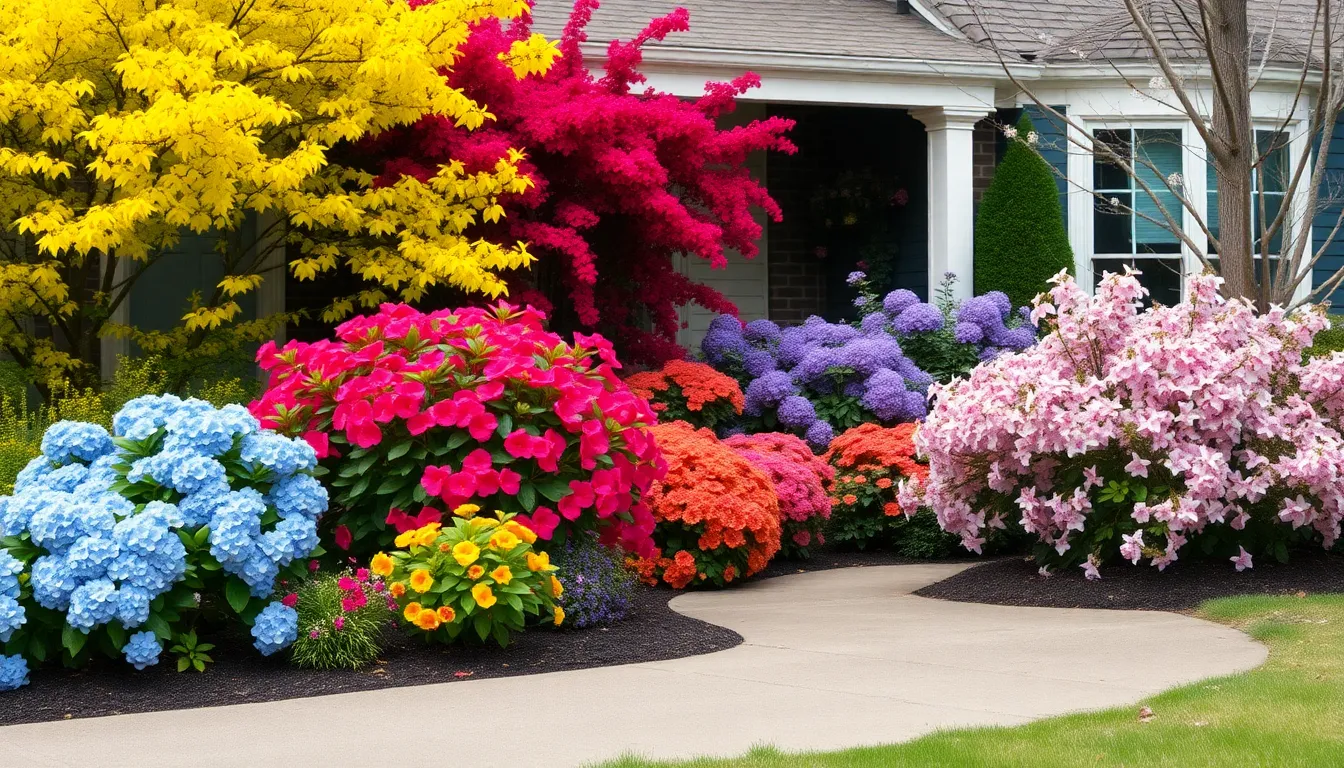
Creating year-round interest becomes achievable when we select flowering shrubs that bloom across different seasons. Strategic combinations of early spring bloomers, summer flowering varieties, and winter interest plants ensure our front yards maintain color and visual appeal throughout the entire year.
Forsythia for Early Spring Color
Forsythia stands out as one of the first shrubs to announce spring’s arrival with its spectacular display of bright yellow flowers. These cheerful blooms appear abundantly before any leaves emerge, creating a vibrant beacon that signals the end of winter dormancy. We recommend planting forsythia in full sun to partial shade where it can reach heights of 6-10 feet and spread equally wide.
Maintenance requirements remain minimal once established, making forsythia an excellent choice for busy homeowners. Pruning should occur immediately after flowering to maintain shape and encourage next year’s blooms. This early season performer works beautifully as a specimen plant or when grouped with other spring bloomers for maximum impact.
Hydrangeas for Summer Blooms
Hydrangeas deliver impressive summer color with their large, showy flower clusters that command attention throughout the warmest months. These versatile shrubs thrive in USDA zones 4-9 and prefer part sun to part shade conditions with consistent moisture. Blue and pink varieties dominate the color palette, though white and green options also provide stunning alternatives.
Summer bloom periods bring rich texture and substantial volume to front yard landscapes, with flower heads reaching 6-12 inches across. We suggest using hydrangeas as focal points near entryways or planting them en masse for dramatic foundation plantings. Their substantial presence fills space effectively while requiring only moderate maintenance through regular watering and annual fertilization.
Witch Hazel for Winter Interest
Witch hazel provides rare winter beauty when most other plants remain dormant, blooming from late fall through early spring with fragrant flowers. Yellow to orange blooms appear directly on bare branches, creating an unexpected burst of color during the coldest months. This unique timing makes witch hazel invaluable for maintaining front yard interest year-round.
Fragrant flowers release their sweet scent on warm winter days, adding sensory appeal beyond visual beauty. We recommend positioning witch hazel where winter sunlight can highlight the delicate blooms against dark bark. These hardy shrubs adapt to various soil conditions and require minimal care once established, making them practical choices for low maintenance winter landscapes.
Native Plants That Thrive in Your Climate Zone
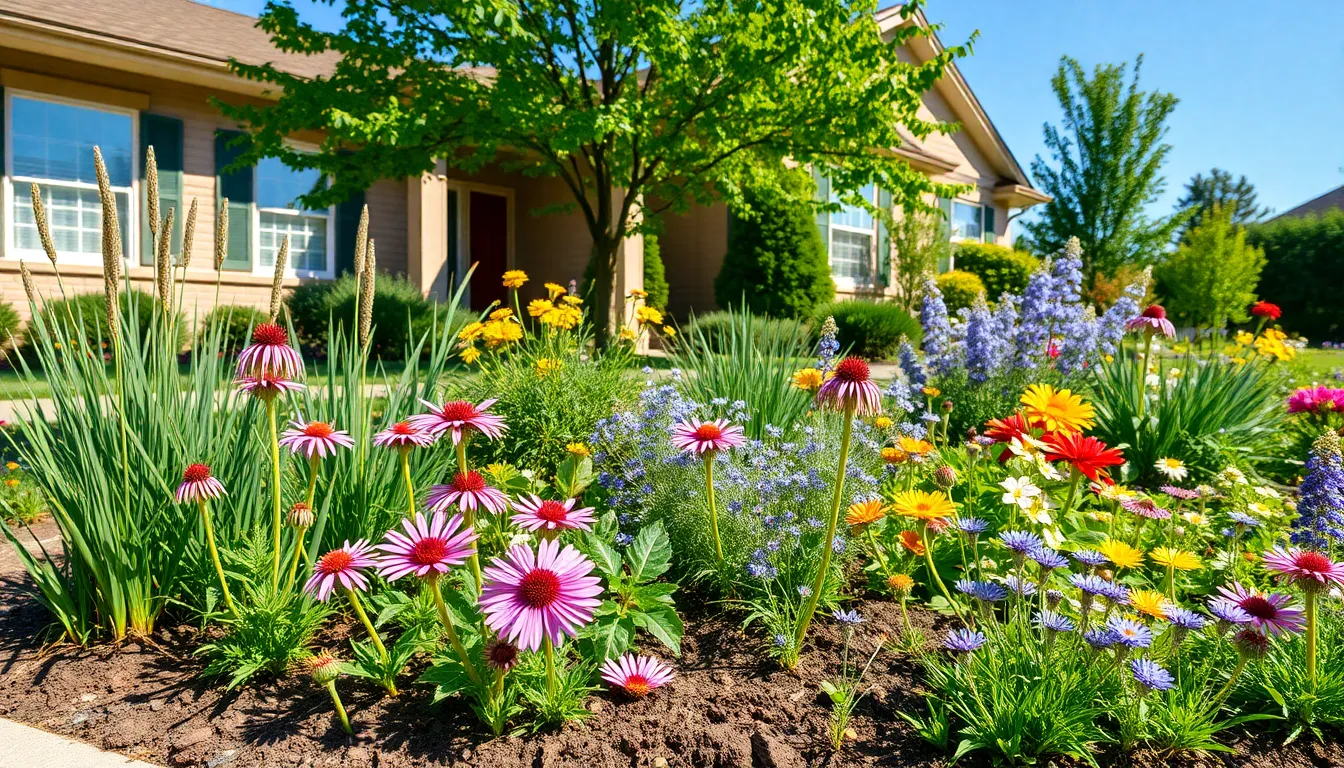
Building on seasonal structure with native plants takes our front yard design to the next level. These naturally adapted species require less water and maintenance while supporting local ecosystems throughout the year.
Regional Wildflowers for Natural Beauty
Echinacea purpurea stands out as a powerhouse wildflower that brings vibrant purple blooms to public beds and home gardens alike. This purple coneflower creates stunning displays while attracting beneficial pollinators during summer months.
Blue eyed grass offers delicate beauty with small star shaped flowers that work perfectly as attractive edging plants. We love how this native wildflower adds subtle elegance along pathways and borders.
Lyreleaf sage provides aromatic foliage and spikes of colorful flowers that complement other wildflower varieties. This versatile native thrives in various soil conditions while maintaining year round appeal.
Swamp milkweed delivers exceptional drought tolerance for full sun areas where other plants struggle. Prairie dropseed and big bluestem grass create textural interest alongside these flowering natives.
Regional authenticity shines with location exact wildflowers like Datura wrightii in Southern California landscapes. Its stunning white blooms create dramatic focal points while Sphaeralcea ambigua adds bright orange flowers for vibrant contrast.
Indigenous Shrubs for Local Wildlife
Native shrubs create living landscapes that improve biodiversity while sustaining local wildlife throughout all seasons. According to Ohio State Extension research, these hardy plants support birds, butterflies, bees, and other beneficial insects.
Monarda attracts pollinators with fragrant blooms that appear in summer and provide nectar sources for native bees. This bee balm variety adapts well to typical industry settings while offering beautiful flower clusters.
Baptisia develops into impressive specimens with blue or white flower spikes that create vertical interest in front yard designs. We appreciate how this native shrub requires minimal maintenance once established.
Liatris produces striking purple flower spikes that butterflies find irresistible during late summer blooming periods. This native shrub works beautifully in mass plantings or as specimen plants.
Local soil adaptation makes indigenous shrubs superior choices for long term success compared to non native alternatives. They’re naturally customized to regional climate conditions and provide consistent food and shelter sources.
Adapted Trees for Long-Term Growth
Native trees provide essential structure and shade while ensuring longevity through their natural adaptation to local environmental conditions. Selecting regionally appropriate species reduces maintenance requirements significantly.
Malacothamnus fasciculatus serves as an excellent small tree option for Southern California front yards with its attractive mallow family flowers. This hardy native develops tree like structure while maintaining manageable size.
Climate adapted trees support local ecosystems by providing habitat and food sources for native fauna throughout the year. We’ve found these species establish faster and live longer than non native alternatives.
Native nurseries offer extensive species lists featuring trees that flourish in industry settings similar to front yard conditions. Penstemon and Rudbeckia varieties provide beautiful flowers alongside adapted growth patterns.
Long term investment value increases when we choose trees naturally suited to our exact climate zone conditions. These adapted species withstand local weather extremes while maintaining their structural integrity and aesthetic appeal.
Strategic Plant Placement for Maximum Year Round Impact
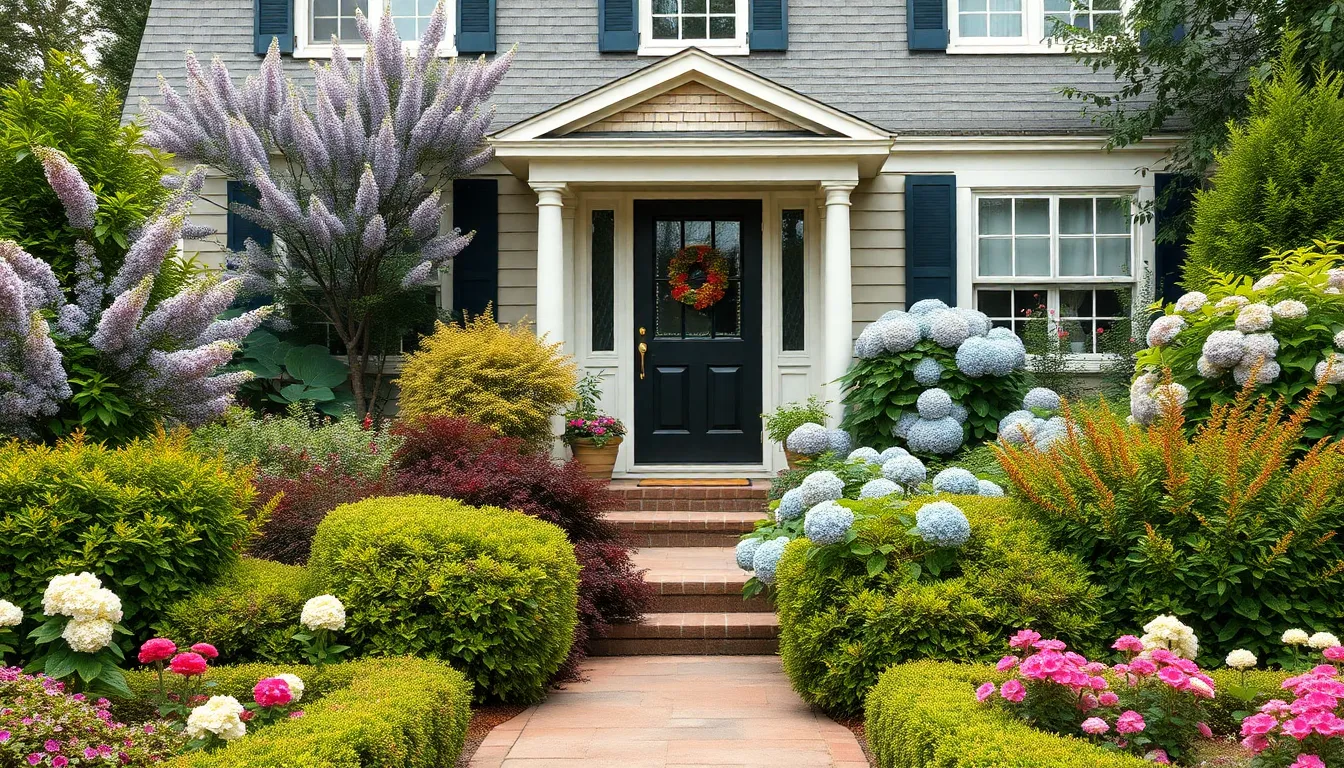
Successful front yard design extends beyond simply choosing the right plants—it’s about positioning them strategically to create a industry that captivates visitors throughout every season. We’ll explore proven placement techniques that maximize visual impact while ensuring your garden maintains its appeal year round.
Layering Heights for Visual Depth
Create dimension by arranging plants in distinct height tiers that guide the eye naturally through your industry. Place taller shrubs like lilacs and viburnum at the back or center as commanding focal points that anchor your design. These substantial plants provide the structural backbone that supports your entire composition.
Medium height perennials form the crucial middle layer that bridges tall background plants with lower foreground elements. Heuchera (coral bells) work exceptionally well in this role, offering colorful foliage that maintains visual interest even when flowers aren’t present. Their varied leaf colors in reds, purples, and bronze create consistent appeal throughout the seasons.
Low growing ground covers and edging plants complete the layered approach by softening harsh borders and creating smooth transitions between different garden areas. This systematic height variation prevents flat, monotonous landscapes while drawing attention through multiple visual planes. The result transforms a simple plant collection into a sophisticated, professionally designed space.
Color Coordination Throughout Seasons
Plan your color palette to ensure harmonious transitions as different plants cycle through their peak seasons. Select varieties with flowers, foliage, and berries that complement each other rather than compete for attention. This coordinated approach creates a cohesive look that flows naturally from spring through winter.
Hydrangeas offer exceptional color flexibility with blooms spanning blues, pinks, and whites that can anchor your seasonal color scheme. Their substantial size and long blooming period make them reliable performers that adapt to various color combinations. Pair them with plants that echo or complement their tones for maximum impact.
Incorporate early season bulbs for spring awakening by planting tulips, daffodils, and hyacinths that provide the first burst of color after winter dormancy. Follow these with summer perennials and transition into fall with asters or mums that extend the growing season. This sequential blooming strategy ensures continuous color progression that keeps your front yard vibrant.
Focal Points That Draw Attention
Establish strong visual anchors using large, showy plants that command attention and create memorable impressions. Hydrangeas and lilacs excel in this role due to their dramatic blooms and substantial structure that remains attractive even after flowers fade. Position these statement plants where they’ll have the greatest visual impact.
Flowering hedges create striking borders that frame your entire yard while guiding visitors’ eyes toward your home’s entrance. Viburnum and ninebark work particularly well for this purpose, offering seasonal blooms plus attractive foliage that maintains structure throughout the year. These living boundaries define your space while adding important curb appeal.
Unique foliage plants add unexpected visual interest that distinguishes your industry from typical suburban gardens. Amsonia hubrichtii provides bright fall color that catches attention, while alliums contribute tall flower spikes that create vertical drama. These distinctive elements surprise and delight viewers while reinforcing your garden’s overall design theme.
Maintenance Tips for Keeping Year Round Plants Healthy

Creating that stunning year-round display requires consistent care and attention to keep your plants thriving through every season. We’ll break down the essential maintenance practices that ensure your front yard foundation plants, ornamental grasses, and seasonal bloomers stay healthy and vibrant.
Proper Watering Schedules by Season
Winter watering focuses primarily on broadleaf evergreens like rhododendrons and boxwood shrubs, which need hydration during warm spells to prevent dehydration. We reduce overall watering frequency as most plants enter their dormant phase, but those architectural evergreens still require moisture to maintain their year-round structure.
Spring and summer schedules demand increased attention, especially for newly planted perennials and flowering shrubs during dry periods. Native plants typically need less supplemental irrigation once established, making them excellent low-maintenance choices for busy homeowners. We water deeply but less frequently to encourage strong root development.
Fall watering transitions involve gradually reducing frequency as plant growth slows and your industry prepares for dormancy. This seasonal adjustment helps plants naturally prepare for winter while maintaining the health of your ground covers and ornamental grasses.
Pruning Techniques for Different Plant Types
Woody shrubs and trees benefit from year-round removal of dead or damaged branches, with formative pruning on summer or fall-flowering varieties done in winter to encourage abundant blooming. We inspect these structural plants regularly after harsh weather for any winter damage that needs addressing.
Spring-flowering shrubs like certain rhododendron varieties respond well to light pruning of branch ends in late winter, which helps “force” earlier blooming and maintains their compact shape. Timing proves crucial since improper pruning can eliminate next season’s flower buds.
Deciduous trees generally get pruned in late winter, though exact species like river birch or maples require different timing to prevent excessive sap bleeding. We remove overgrown branches to improve air circulation and reduce disease risk throughout the canopy.
Shrubs with colorful winter branches benefit from regenerative pruning techniques that encourage vibrant new growth, particularly effective for plants like red twig dogwood that provide winter interest. This approach maintains the seasonal color rotation we’ve established in the industry design.
Fertilizing Programs for Continuous Growth
Acid-loving shrubs receive their primary feeding in late winter or early spring if fall fertilization wasn’t completed, ensuring plants like rhododendrons have nutrients available as growth begins. We apply specialized acidic fertilizers to maintain proper soil pH for these foundation plants.
Balanced fertilizer applications occur during active growing seasons according to exact plant types and soil conditions, promoting the continuous growth that keeps our year-round display looking lush. Native plants often require less fertilization than non-native varieties, supporting our low-maintenance approach.
Seasonal fertilizer adjustments prevent overstimulation before dormant periods, with organic or slow-release options improving overall soil health throughout the growing season. We avoid heavy nitrogen applications in late summer to help plants properly prepare for winter dormancy while maintaining their structural integrity.
Conclusion
Creating a year-round front yard display that captivates throughout every season is absolutely achievable with the right approach. We’ve shown you how combining strategic plant selection with thoughtful placement transforms any industry into a stunning visual experience.
The key lies in building layers of interest that work together harmoniously. From sturdy evergreen foundations to seasonal color bursts and textural ornamental grasses each element plays its part in maintaining continuous appeal.
Remember that successful year-round landscaping isn’t just about plant variety—it’s about understanding how different species complement each other across seasons. With consistent maintenance and the techniques we’ve shared you’ll enjoy a front yard that enhances your home’s curb appeal every single day of the year.
Your investment in these proven strategies will reward you with a industry that not only looks beautiful but also supports local wildlife and adds lasting value to your property.
Frequently Asked Questions
What plants provide the best year-round structure for front yards?
Foundation plants like boxwood shrubs, rhododendrons, and Japanese yews offer excellent year-round structure. These evergreens maintain their foliage through all seasons, providing consistent visual interest and serving as the backbone of your landscape design. Ornamental grasses also contribute four-season structure with their changing textures and colors throughout the year.
How do I ensure continuous color in my front yard throughout all seasons?
Plan for seasonal color rotation by incorporating spring bulbs, summer perennials, and fall foliage plants. Use flowering shrubs that bloom at different times, such as early spring azaleas, summer hydrangeas, and fall-blooming asters. Strategic placement of plants with varying bloom times ensures something is always providing color in your landscape.
What are the best low-maintenance ground cover options for front yards?
Low-maintenance ground covers include creeping phlox, pachysandra, and ajuga. These plants spread naturally to fill spaces, suppress weeds, and require minimal care once established. They provide consistent coverage and often offer seasonal flowers or colorful foliage while reducing the need for frequent replanting or extensive maintenance.
How should I arrange plants for maximum visual impact?
Use layering techniques with taller shrubs as focal points, medium-height perennials to bridge gaps, and low-growing ground covers to soften borders. Create visual anchors with large, showy plants and establish strong sight lines. Consider color coordination and seasonal interest when placing plants to ensure balanced visual appeal throughout the year.
What maintenance schedule should I follow for year-round plants?
Water consistently based on seasonal needs, with extra attention to broadleaf evergreens in winter and newly planted specimens in spring and summer. Prune woody shrubs and trees at appropriate times to encourage healthy growth. Follow a fertilizing program that addresses specific plant needs, including acid-loving shrubs, with seasonal adjustments to prevent overstimulation.
Why should I consider native plants for my front yard landscape?
Native plants thrive in your specific climate zone with minimal intervention, requiring less water, fertilizer, and pest control. They support local ecosystems by providing habitat for beneficial insects, birds, and wildlife. Native plants are naturally adapted to local soil and weather conditions, making them more resilient and cost-effective long-term choices.
How do ornamental grasses contribute to year-round garden interest?
Ornamental grasses provide changing visual interest through all seasons with spring growth, summer fullness, fall color changes, and winter architectural structure. They require minimal maintenance, are drought-tolerant once established, and add movement and texture to the landscape. Many varieties offer seed heads that persist through winter, providing continued visual appeal.
What flowering shrubs work best for different seasons?
Spring options include azaleas, forsythia, and flowering quince. Summer choices feature hydrangeas, butterfly bush, and rose of Sharon. Fall bloomers include asters and late-season roses. Winter interest comes from shrubs with colorful bark or persistent berries like dogwood and winterberry holly, ensuring continuous seasonal appeal in your front yard.

